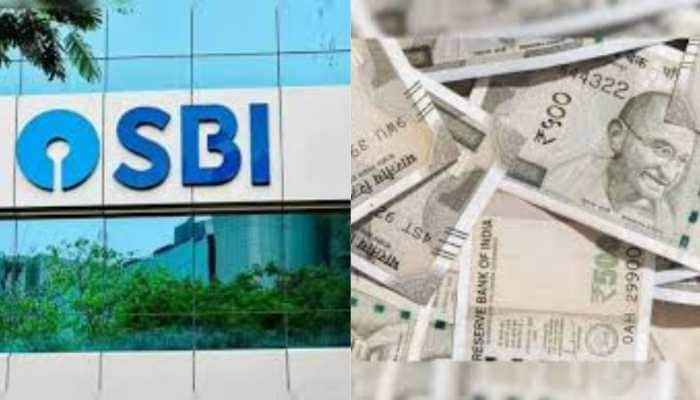Acute pancreatitis: Causes, symptoms and treatment
Acute pancreatitis usually begins with gradual or sudden pain in the upper abdomen that sometimes extends to the back.
Trending Photos
)
Dr Suresh Singhvi
Acute pancreatitis is an inflammatory condition of the pancreas that is severely painful and at times deadly. Despite the great advances in critical care medicine over the past 20 years, the mortality rate of acute pancreatitis has remained at about 10%, but increased to more than 50% in a patient who has severe acute necrotising pancreatitis when diagnosed with CT Scan and blood tests.
Cause and burden of acute pancreatitis
There are common causes of acute pancreatitis including:
- Gallstones
- Ingested medicines
- High triglyceride levels in the blood
- High calcium levels in the blood
- Heavy alcohol consumption
Symptoms of acute pancreatitis
Acute pancreatitis usually begins with gradual or sudden pain in the upper abdomen that sometimes extends to the back. The pain may be mild at first and become worse after eating. The pain is often severe, constant, and commonly lasts for several days in the absence of treatment. A person with acute pancreatitis usually looks and feels very ill and needs immediate medical attention. Most cases require hospitalization for close monitoring, pain control, and intravenous hydration. Other symptoms can include:
- Swollen and tender abdomen
- Nausea and vomiting
- Fever
- Rapid pulse
Diagnosis of acute pancreatitis
Acute pancreatitis is confirmed by medical history, physical examination, and typically a blood test (amylase or lipase) for digestive enzymes of the pancreas. Blood amylase or lipase levels are typically elevated 3 times the normal level during acute pancreatitis. In some cases when the blood tests are not elevated and the diagnosis is still in question, abdominal imaging, such as a computed tomography (CT) scan, might be performed.
Testing
After diagnosis is confirmed, certain imaging tests might be performed during hospitalization or after to help identify the cause. Such tests include:
- Transabdominal ultrasound
- Endoscopic ultrasound (EUSs)
- Magnetic resonance cholangiopancreatography (MRCP)
- Computerized tomography (CT)
Treatment of acute pancreatitis
Fluids
One of the primary therapies for acute pancreatitis is adequate early fluid resuscitation, especially within the first 24 hours of onset. Pancreatitis is associated with a lot of swelling and inflammation. Giving fluids intravenously prevents dehydration and ensures that the rest of the organs of the body get adequate blood flow to support the healing process.
Nutritional Support
Initially, no nutrition is given to rest the pancreas and bowels during the first 24 to 48 hours. After 48 hours, a plan to provide nutrition should be implemented because acute pancreatitis is a highly active state of inflammation and injury that requires a lot of calories to support the healing process. In most cases, patients can start to take in food on their own by 48 hours. If this is not possible, then a feeding tube that is passed through the nose into the intestines can be used to provide nutrition. This method is safer than providing nutrition intravenously. There is no benefit to using probiotics for acute pancreatitis.
Pain control
Intravenous medications, typically potent narcotic pain medications, are effective in controlling pain associated with acute pancreatitis. Nausea is a common symptom and can be due to pancreatic inflammation as well as slowing of the bowels. Effective intravenous medications are available for nausea. Pain and nausea will decrease as the inflammation resolves.
Treatment of underlying issues
In addition to providing supportive care, underlying causes need to be promptly evaluated. If the acute pancreatitis is thought to be due to gallstones, medication, high triglycerides, or high calcium levels within the patient’s body (or other external causes), directed therapy can be implemented.
Endoscopic Retrograde Cholangiopancreatography (ERCP)
ERCP is a procedure in which a physician with specialized training passes a flexible, thin tube with a camera attached to the end through the patient’s mouth and into the first part of the small intestine, where the bile duct and pancreatic duct exit. With this device, a small catheter can be passed into the bile duct to remove gallstones that might have gotten stuck and are the cause of pancreatitis. In certain situations, a special catheter can also be passed into the pancreatic duct to help the pancreas heal. For more information on ERCP, please click here.
The following procedures can be performed with ERCP
Sphincterotomy - Using a small wire on the endoscope, a physician finds the muscle that surrounds the pancreatic duct or bile duct and makes a tiny cut to enlarge the duct opening. When a pseudocyst is present, the duct is drained.
Gallstone removal - The endoscope is used to remove pancreatic or bile duct stones with a tiny basket. Gallstone removal is sometimes performed along with a sphincterotomy.
Stent placement - Using the endoscope, a physician places a tiny piece of plastic or metal that looks like a straw into a narrowed pancreatic or bile duct to keep it open.
Balloon dilatation - Some endoscopes have a small balloon that a physician uses to dilate, or stretch, a narrowed pancreatic or bile duct. A temporary stent can be placed for a few months to keep the duct open.
It is well documented that one of the main side effects of ERCP is pancreatitis; however, there are several clearly defined situations when urgent ERCP is indicated for acute pancreatitis.
Treatment considerations for severe acute pancreatitis
Necrotizing pancreatitis:
The definition of severe acute pancreatitis includes cases in which a portion of pancreatic tissue is no longer viable because of injury - this is called necrosis. Over time, the body will resorb this dead tissue. In some cases, this dead tissue can become a source of infection. When infection is suspected, diagnosis can be made by needle biopsy, and if confirmed, medical treatment with antibiotics is required along with consideration of drainage.
In severe acute pancreatitis, patients are in ICU and on Ventilator support and medicines to keep the blood pressure normal. The patients are in Multiorgan failure. Unless the patients are operated upon at the right time, the patients can die of this severe pancreatitis. Operation carries a huge risk of dying . In selected patients- Video assisted pancreatic necrosectomy done at the right time, gives them a better chance of survival. In this operation, a drain is placed in the area of necrosed pancreas, and at the right time, the patient is taken to the operation theatre and via a tube placed along the drain, endoscope is inserted and dead pancreas is removed in pieces. The procedure will be repeated often until the patient gets better. The advantage of this operation is that the patient treated at the right time,, will need not go to ICU most of the time and he is stable after the infection is removed. The disadvantage is that the procedure is to be repeated a few times and hence the cost of treatment can increase.
(The Author is a Senior Consultant Liver transplant Surgeon with Sir Ganga Ram Hospital, New Delhi. Website: www.liverdiseaseindia.com)
Stay informed on all the latest news, real-time breaking news updates, and follow all the important headlines in india news and world News on Zee News.
Live Tv







)
)
)
)
)
)
)
)
)
)
